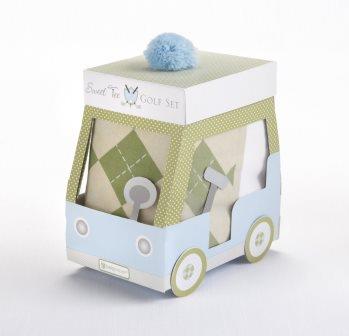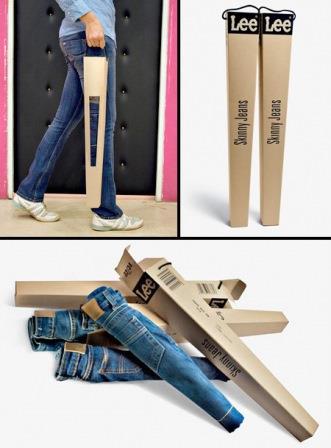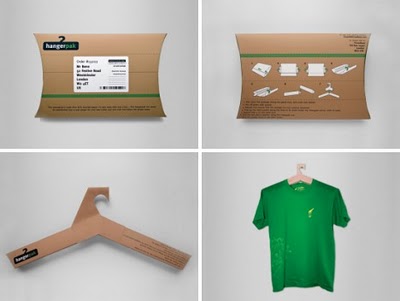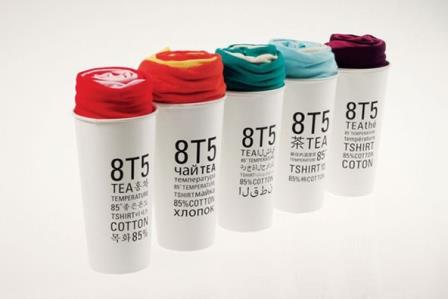Does clothing need packaging?

In a world where branding and packaging are inextricably linked in a way that consumers understand and form their image of a brand, the answer is: Yes! Already, many famous international clothing brands, have progressed in designing and marketing innovative packaging proposals for their products serving different purposes at a time.
Packaging of garments was not completely absent, it was mainly applicable in male garment though. It is true that most items like shirts and dresses, hang on shelves and do not require special packaging.  However, some basic clothing, especially the male species sold in packages, usually plastic or paper, for stereotypical reasons. In retail men’s clothing you can find gloves, underwear, scarves, T-shirts and socks, all in some kind of packaging. The reason is that men would prefer simply to grab a pack of underwear or socks, shirts or even costumes than to spend an entire afternoon inspecting each item separately. As for the female species, the packaging of clothing is usually limited to multiple packages of underwear and accessories (gloves, scarves, etc.). The other basic clothing are usually displayed on pendant in mannequins and on shelves, as women prefer to examine the garment they are going to buy.
However, some basic clothing, especially the male species sold in packages, usually plastic or paper, for stereotypical reasons. In retail men’s clothing you can find gloves, underwear, scarves, T-shirts and socks, all in some kind of packaging. The reason is that men would prefer simply to grab a pack of underwear or socks, shirts or even costumes than to spend an entire afternoon inspecting each item separately. As for the female species, the packaging of clothing is usually limited to multiple packages of underwear and accessories (gloves, scarves, etc.). The other basic clothing are usually displayed on pendant in mannequins and on shelves, as women prefer to examine the garment they are going to buy.
 In recent years, however, clothing brands invest time and money in the package that best represents their brand and the reasons are not only stereotypical or functional (space saving, better provision of products as stacked according to packaging). Many brands, have invested in strengthening their image and their awareness or revitalizing a trademark that fails to overcome competition. For example, an internationally known apparel jeans brand, who experienced a relative crisis due to its’ customers preference to switch to other brands, proceeded to release innovative and remarkable packaging for the jeans, by making and passersby on the street to talk about it and by seeing customers in the streets with this package, rather than with a conventional bag.
In recent years, however, clothing brands invest time and money in the package that best represents their brand and the reasons are not only stereotypical or functional (space saving, better provision of products as stacked according to packaging). Many brands, have invested in strengthening their image and their awareness or revitalizing a trademark that fails to overcome competition. For example, an internationally known apparel jeans brand, who experienced a relative crisis due to its’ customers preference to switch to other brands, proceeded to release innovative and remarkable packaging for the jeans, by making and passersby on the street to talk about it and by seeing customers in the streets with this package, rather than with a conventional bag.
The main goal of every company investing in the garment packaging, is not just to increase sales. On top of that, this practice  is ideal for maximizing the marketing strategy with little capital. The pioneering, innovative and practical packaging is a great way to reach your customers through the power of sight. For example, many companies have focused on the packaging of the t-shirts with alternative materials such as sailcloth, cardboard, wood and even glass bottles. There are already t-shirts packages which refer to tea cups, ice cream, cupcakes, milk, food, deck, and even bottles of blood leading to relevant associations with the brand. For example, a well-known sporting goods company associated the latest packaging with blood, which is the driving force of the heart and the human body thereby.
is ideal for maximizing the marketing strategy with little capital. The pioneering, innovative and practical packaging is a great way to reach your customers through the power of sight. For example, many companies have focused on the packaging of the t-shirts with alternative materials such as sailcloth, cardboard, wood and even glass bottles. There are already t-shirts packages which refer to tea cups, ice cream, cupcakes, milk, food, deck, and even bottles of blood leading to relevant associations with the brand. For example, a well-known sporting goods company associated the latest packaging with blood, which is the driving force of the heart and the human body thereby.
Moreover, many companies choose to respond to new consumer trends for convenience and practicality through packaging. Many packages which are usually made of recyclable materials are converted to pendant while others are a guide for fast and efficient clothes folding that usually require special care, such as shirts.
 In any case, before we select the package, we need to clearly define the objectives of this action, the expected results and the target-market as well. Is it about a seasonal promotion or it is fully incorporated into the product portfolio? Do we want to attract customers, to facilitate their everyday lives or to enhance the brand awareness? Furthermore, we have to pay attention to the technical specifications as well, since they are as important as packaging. Designers should take into account the storage and stacking of products on the shelves (eg. Square or cylindrical packages), and the need of consumers to inspect and often touch the product prior to purchase (eg. packaging with transparent windows, others open on the top for consumers to feel the texture of clothing, etc.). Still, the aim is not only to capture the gaze of passersby but to transform the visitor to store customer.
In any case, before we select the package, we need to clearly define the objectives of this action, the expected results and the target-market as well. Is it about a seasonal promotion or it is fully incorporated into the product portfolio? Do we want to attract customers, to facilitate their everyday lives or to enhance the brand awareness? Furthermore, we have to pay attention to the technical specifications as well, since they are as important as packaging. Designers should take into account the storage and stacking of products on the shelves (eg. Square or cylindrical packages), and the need of consumers to inspect and often touch the product prior to purchase (eg. packaging with transparent windows, others open on the top for consumers to feel the texture of clothing, etc.). Still, the aim is not only to capture the gaze of passersby but to transform the visitor to store customer.
References : Packaging innovation, Riches (2014), Sharf (2012), Rupolo (2013), www.dkconsultants.gr

